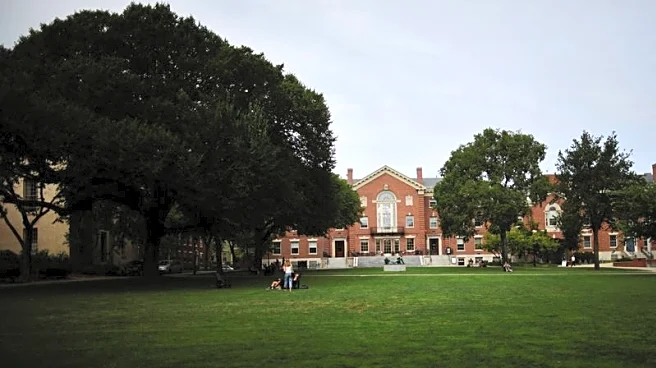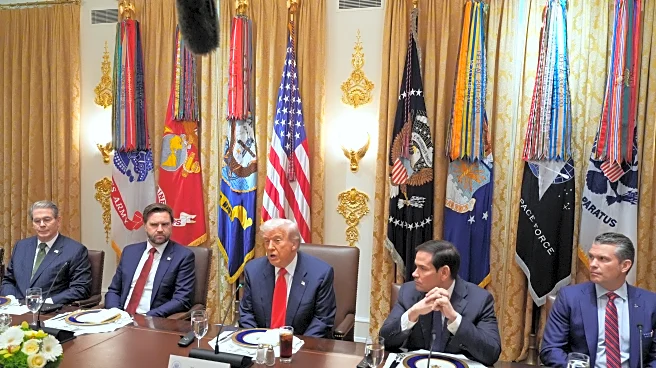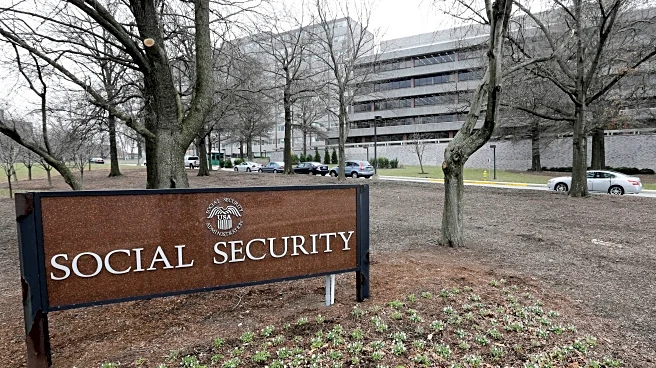What's Happening?
President Trump has announced a significant change to the H-1B visa program, requiring employers to pay a $100,000 fee for new visas. This change is aimed at reducing the number of foreign workers in high-paying
tech jobs, but it has substantial implications for rural school districts that rely on international teachers. In Hardin, Montana, a town struggling to attract educators, about 30 out of 150 teachers are on teaching visas. The district's superintendent, Tobin Novasio, expressed concern that the fee would make it financially impossible to transition teachers from short-term J1 visas to longer-term H-1B visas, which are crucial for maintaining staff continuity. The Department of Homeland Security data indicates that educators are the third most common occupation group for H-1B visas, highlighting the widespread impact of this policy change.
Why It's Important?
The fee increase for H-1B visas could severely impact rural school districts that depend on international teachers to fill staffing gaps. These districts often struggle to attract domestic candidates, and the ability to employ international teachers on H-1B visas is vital for maintaining educational standards. The policy change could lead to a shortage of qualified teachers, affecting the quality of education in these areas. Additionally, the proposal to change the H-1B visa allocation from a lottery system to a weighted scale favoring higher earners could further disadvantage educators, whose salaries are typically lower than those in the tech industry. This could exacerbate existing challenges in recruiting and retaining teachers in rural schools.
What's Next?
The White House has indicated that the Department of Homeland Security may grant exceptions to the new fee, but it remains unclear if schools will qualify for such exemptions. Advocacy groups like the AASA are working to ensure educators are exempted from the fee increase, viewing it as an unintentional consequence of the policy. Meanwhile, rural districts like Hardin are exploring alternative solutions, such as creating apprenticeship programs and strengthening local teacher pipelines. The ongoing uncertainty around visa policies may prompt schools to seek new strategies for staffing, potentially reshaping the landscape of education in rural America.
Beyond the Headlines
The visa fee increase raises broader questions about immigration policy and its impact on various sectors beyond technology. It highlights the need for a nuanced approach that considers the unique needs of different industries, such as education, which plays a critical role in community development and social stability. The reliance on international teachers in rural areas underscores the interconnectedness of global labor markets and the importance of policies that support diverse workforce needs. As the debate continues, stakeholders must balance the goal of prioritizing American workers with the practical realities faced by sectors that depend on international talent.













